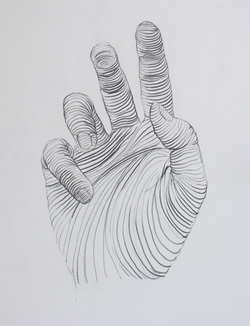

But your mind feels them as lines that are stillĭirected towards the point where they meet. Of the house seemingly form one line, but it’s not drawn fully. But some of the lines are imaginary and incomplete. The line of the horizon, the ones that form the house, the shadows on the lawn, even the ladder. Following the rules of perspective, they are all meeting at one point, somewhere on the left. Almost all of the lines are directed towards him. This is the main point of the painting, the one that the viewers should focus their attention on.

The entire composition and the way it’s structured builds up around the central figure of George Washington with an ax. Something that is happening in the center of the painting. They are used both for the sake of composition and to point out Parson Weems Fable is a classic example of Of this painting is the same person who painted the famous American Gothic, and Enjoy! Artists That Use Implied Lines Examples Parson Weems Fable by Grant Wood, 1939 And we tried our best to explain these examples to you. We’ve prepared a list that consists of several works of art, that are a pleasure to look at, and that have implied lines in them. It is also well known that one of the best ways to figure something out is to look at the masters of the craft who figured it out already. This might seem more complicated at first, but it’s also a great technique to understand how contrast and plane changes form implied lines. Use only value in your work to define the contours of the object. Try to erase parts of them to see how it works out, and draw as many sketches as you want until you master this and it becomes quite automatic.Īnother way is to practice drawing using no lines at all. In each sketch, you can think which lines are the most important and which ones can be turned into implied lines.
Synonym for contour line art how to#
One way of learning how to use them is to do a lot of study sketches of simple landscapes or objects. Lots of artists use implied lines intuitively without even knowing it. How can you learn to use implied lines in your own work?Īctually, it’s not as hard as it might seem. They can also turn the viewer’s attention to a certain scene that is happening on the drawing – whenever you decide to use them, they’ll help you a lot with building the composition. They can be used to capture subtle and curved edges of the objects or the line of the horizon. You can use implied lines in still-life and landscape drawings as well. The viewer’s mind will still know for sure that there is a line there, even though we didn’t exactly draw it, because everyone knows where the certain facial features are and what they look like.
Synonym for contour line art full#
So, why is the implied line used, besides pointing at objects? It can also indicate a subtle change of plane when a full line would seem too heavy or inappropriate for the composition and the style in general.įor example, when we draw portraits, we don’t define all facial features with full lines, because that wouldn’t look right, but instead, just use shadows and interrupted lines. This is done to guide the viewer’s eyes as well, making them look at certain important parts of the work. One way of creating implied lines is through characters’ postures, hand positions or the direction in which they look. How to Create and Use Implied Lines in Art Yet, while it’s their main purpose, as we progress in our drawing skills, we find out, through theory or practice, that the visible line isn’t the only way. The actual lines themselves are used to define the shape and the edges of the object you’re attempting to draw, and this is basic knowledge. So, you may just start it – and the viewer’s mind will complete it without further help. The human brain still completes it in the imagination and sees it as a line, and interprets that the line exists. The implied line, whenever it’s used, might not be complete and unbroken, and it may consist of small parts and dashes or not be visible at all.


 0 kommentar(er)
0 kommentar(er)
